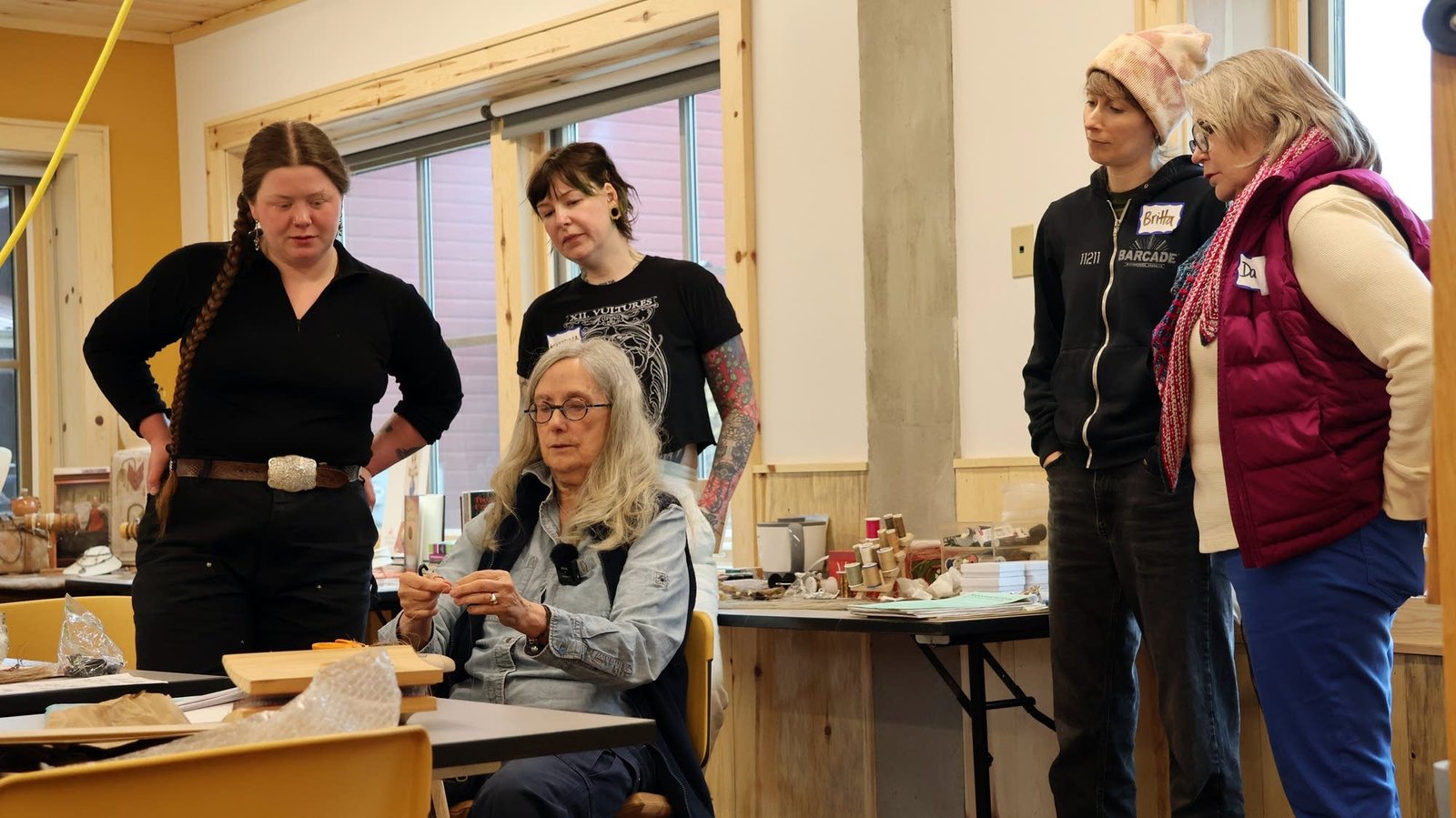
In every corner of Minnesota, there are good stories waiting to be told of places that make our state great and people who in Walt Whitman’s words “contribute a verse” each day. That's the theme of our series “Wander & Wonder: Exploring Minnesota’s unexpected places.”
Karen Keenan is on a mission to revive the centuries-old art of making jewelry from human hair. But first she needs to overcome the ick factor.
“I have gotten anything from ‘Oh, that’s disgusting,’ to ‘Oh, that’s creepy,’ to ‘Yuck,’” Keenan said when she pitches people on the history of hair art. “And then they say, ‘Huh.’ You can almost see the change happening in them. And then they say, ‘This is very interesting.’”

Keenan’s well-grounded in the craft, known as hairwork. Her mother kept a brooch of hair as a family heirloom. Combing through her family history a decade ago, Keenan discovered she came from a long line of hairworkers from Våmhus, a village in central Sweden.
In 2018 she traveled to Sweden on an American Scandinavian Foundation fellowship to learn the old ways. Now she teaches them at the North House Folk School in Grand Marais.
‘Making beautiful things’
During a recent class, Keenan showed how to attach strands of hair to a weight called a bobbin that looks like a big fishing sinker. She uses horsehair to introduce the technique to students because it’s thicker than human hair.
The strands are stretched across a hair table 9 inches across with a hole in the middle. It looks like a big bagel on legs. Each strand holds a bobbin on one end and attaches to a counter weight in the center of the hair table.
“Eight strands of five hairs each,” explained Keenan. “And then it’s a matter of weaving.” The braids can be hollow with wire inserted to hold shapes, cord like or flat.

Keenan’s taught more than 100 students, typically classes of five or six. Many come with a strong interest in folk art and a desire to connect to the past.
Katrina Haugen works at a curiosity and oddity store called Twelve Vultures in Minneapolis.
The self described “morbidly curious human being” was intrigued by the traditional use of hair jewelry as memento mori, or mourning jewelry.
“I’m wanting to kind of reintroduce that to people and offer it, maybe hopefully even modernize it, or just revitalize and bring it back and show it the respect that it deserves,” said Haugen.
Dawn Sahouani, a fiber artist and retired teacher from Hastings, said she wanted to learn another art tied to her Nordic culture. She was surprised to learn the practice is common in many cultures.

“To find out that Japanese culture and other places have this sort of tradition of making beautiful things out of human hair is really interesting to me, how universal it is,” she said.
Sienna Nesser, who lives just down the shore in Two Harbors, said she’d been interested in hairwork since college. She has a collection of hair jewelry her grandmother purchased over the years. She heard about Keenan’s classes three years ago, “and I thought, no way! I can finally learn how to do it myself.”
Nesser kept coming back and now helps Keenan as a class assistant.
‘A very precious thing’
Human hair is considered sacred in many cultures, Keenan said. When northern European immigrants came to the United States they often brought hair jewelry. A man might carry a watch fob made of his mother’s hair, knowing he would never see her alive again.
Women wore brooches or necklaces made of hair. Hair art hung on the walls of many immigrant homes.

“People were very sentimental about their loved ones and they had very few ways to remember them. Pictures were very expensive and these were poor people,” she said. Immigrants couldn’t bring much to the new country but hair was light and “a very precious thing.”
In the 1700s and 1800s, hair jewelry was a respected art form. British Queen Victoria was a big booster. Keenan learned that hairworkers from Våmhus would sometimes travel to London to create art.
By the early 1900s hairwork was fading from American culture. Women’s hair styles were shorter, and long hair came to be seen as dirty and a vector for germs.
Keenan, 74, remains a working potter. But the discovery of her grandfather’s roots in Våmhus and the village’s 200-year-old tradition of hairwork led her to want to keep the practice alive. Her daughter Britta is learning the craft now.

Counting hairs can be tedious. It requires precision and attention. But Keenan said she loves the process of braiding the strands.
“It can be a meditative thing,” she said. “Sometimes when I’m making jewelry for a friend, I’m thinking about our relationship. So, there’s a very strong connection.”





